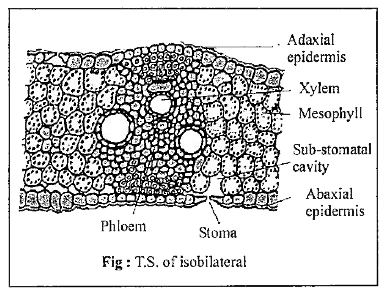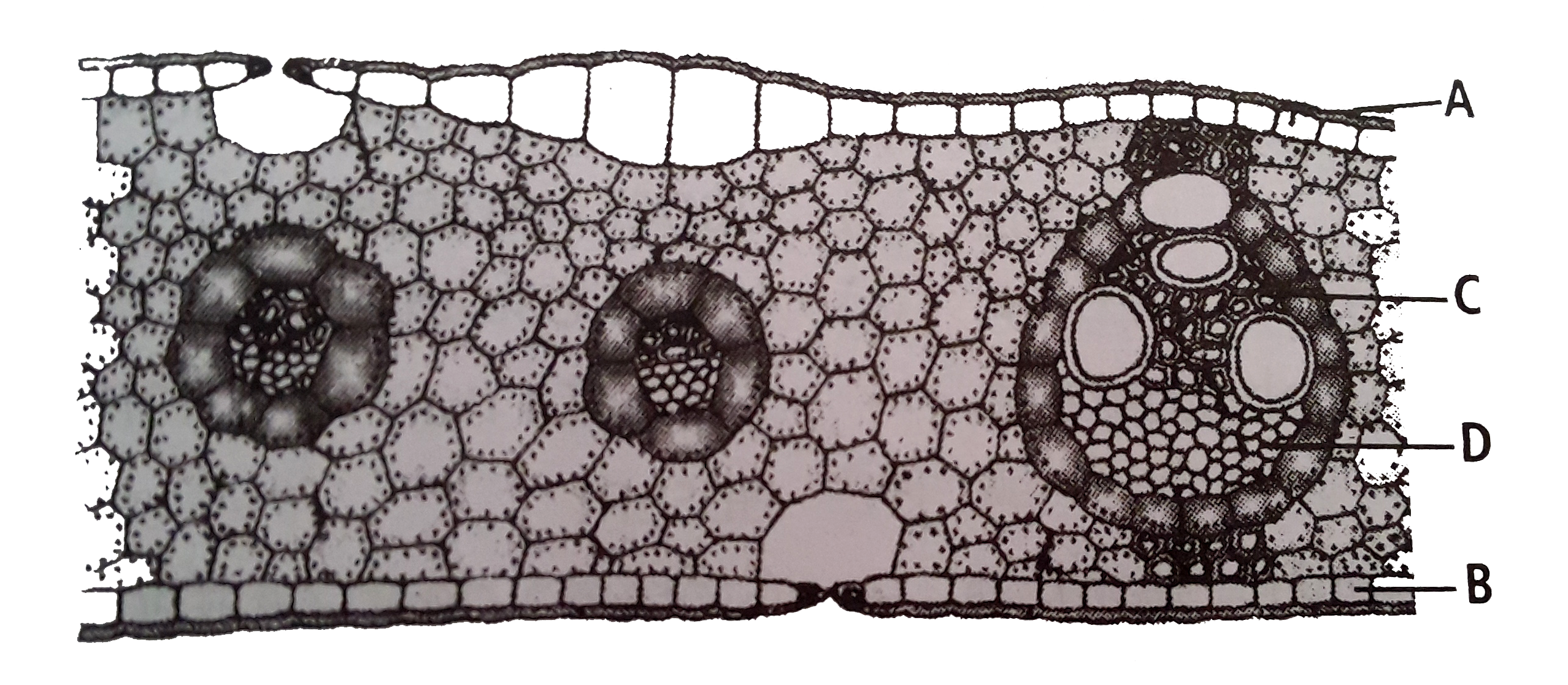Describe the transverse section of isobilateral leaf in brief.
Text Solution
Isobilateral leaves are found in monocot plants. These are generally vertical. In transverse section the following structures are seen :
(i) Epidermis : On lower and upper
side there is single layer of epidermis. It is cuticularised. The cells of the epidermis do not possess chloroplast. Stomata are present on both upper and lower epidemis.This kind of stomata are called as amphistomatic stomata. Only guard cells in the epidermis possess chloroplast. In the upper epidermis there are some large cells, which are found in groups. These are known as motor cells or bulliform cells.
(ii) Mesophyll tissue : In between upper and lower epidemis there is mesophyll tissue. It is undifferentiated into palisade and spongy parenchyma. Its all cells are alike. Cells are oval or spherical with intercellular spaces. These cells contain chloroplast.
(iii) Vascular bundles : Large number of vascular bundles are present. Some of these are small and some are large. There is a sheath of parenchymatous cells around each vascular bundle. It is called as bundle sheath. Above and below the largest vascular bundle there is a patch of sclerenchymatous cells. Vascular bundles are conjoint, collateral and closed type. Xylem is present towards the upper epidermis while phloem is present towards the lower epidermis.

|
Similar Questions
Knowledge Check
In the isobilateral leaf
AThe stomata are present on both the surfaces of the epidermisBMeosophyll is not differentiated into palisade and spongy parenchymaCThe parallel venation is reflected in the near similar size of vascular bundles (except in main veins)DAll of the above statements are correct.In the isobilateral leaf
AThe stomata are present on both the surface of the epidermisBMesophyll is not differentiated into palisade and spongy parenchymaCThe parallel venation is reflected in the near similar size of vascular bundles (except in main veins)DAll of the above statements are correct.The stomata in an isobilateral leaf
AAre present only on the adaxial epidermisBAre present only on the abaxial epidermisCAre absent on both the surfaces of the epidermisDAre present on both the surfaces of the epidermis
isobilateral leaf is characterised by
View SolutionDraw a labelled diagram of transverse section of a dorsiventral leaf. Differentiate between the internal structures of dicotyledonous and monocotyledonous leaves.
View Solution
Identify A, B, C and D in the given transverse section of leaf of Zea mays.
View SolutionIn a transverse section of a sunflower root :
View Solutionisobilateral leaf is characterised by
View Solution
